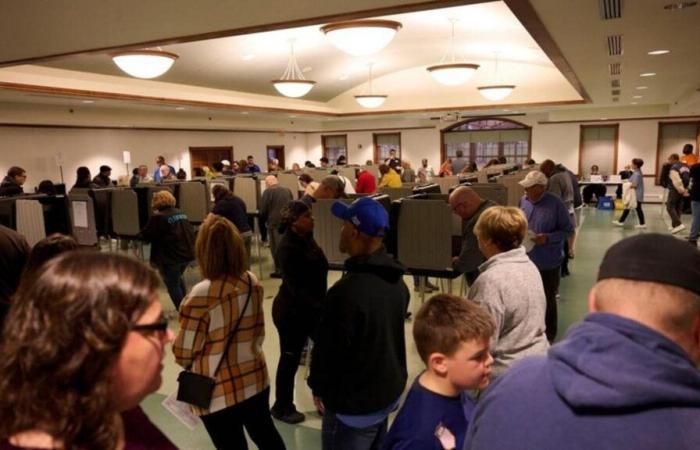Washington: Americans are voting for their next president across the country’s 50 states and District of Columbia on Tuesday, the final day of polling, at the time of going to press. Results are expected to start trickling in late on Tuesday night eastern time (Wednesday morning IST), as the world awaits the outcome of one of the most consequential elections of recent times.
Close to 80 million voters have already voted through both mail-in and in-person voting before polling day.
With Republican nominee, former President Donald Trump, and Democratic nominee, Vice-President Kamala Harris, wrapping up their major campaign events on Monday, both candidates spent Election Day in their respective homes.
Trump was scheduled to vote in Florida — if he had been convicted of criminal charges in his new home state instead of older home state of New York, he would have been ineligible to vote for himself, for Florida bars felons from voting. As polls opened, Trump, on Truth Social, claimed that this was the “most important day” in American history, that voter enthusiasm was at its peak, and that he would win. Trump’s key campaign themes have revolved around inflation, immigration, and projection of strength and end to wars abroad. The former president was scheduled to have his election watch party at Mar-a-Lago on Tuesday evening.
Harris was at the VP’s residence, Naval Observatory, in Washington DC — she has already cast her vote in California through mail. She spent the day giving interviews to local radio stations in the seven swing states. Her main campaign themes have revolved around bringing down the cost of living, underlining Trump’s extremism and dangers he represents to freedom, securing reproductive freedom, and ensuring a continued leadership role of the US globally. Harris’s election party is scheduled to be held at her alma mater, Howard University, a historically Black institution, in DC.
Close contest
Polls showed the race was tight till the very end. But they seemed to be converging towards a slight edge for Harris. The Economist prediction model, in particular, showed Harris gain substantially in recent weeks and gave her a 56% chance of a win. Financial markets, for their part, appeared to factor in a Trump win.
To win, a candidate needs 270 of the 538 electoral votes. All eyes will be on the seven swing states of Pennsylvania, Michigan, Wisconsin, Georgia, North Carolina, Arizona and Nevada. While trends and perhaps even the results in North Carolina, Georgia and Michigan are expected to become clear late on Tuesday night eastern time (EST), trends and results from Wisconsin, Pennsylvania, Georgia and Arizona may become clearer only on Wednesday morning eastern time (Wednesday night in India).
But if the race is close, as is likely, networks are expected to take time before calling the results. As John Lapinski, the head of the NBC decision desk and a political scientist, told HT in a recent interview, “The only thing that I care about in projecting elections is that we are right. We are in absolutely no hurry to project these elections. In a lot of instances for these close races, we will probably be waiting until almost all of the vote is counted. It would be extremely detrimental for American democracy if anybody that runs a decision desk calls any of these races wrong because you could create chaos.”
Prospect of chaos
The US intelligence community appears worried about precisely this prospect of chaos. In a joint statement, the Office of the Director of National Intelligence (ODNI), the Federal Bureau of Investigation (FBI), and the Cybersecurity and Infrastructure Security Agency (CISA) said that it had been “observing foreign adversaries, particularly Russia, conducting additional influence operations intended to undermine public confidence in the integrity of U.S. elections and stoke divisions among Americans”.
The statement claimed that “actors linked to Russia” were manufacturing videos and creating fake articles “to undermine the legitimacy of the election, instill fear in voters regarding the election process, and suggest Americans are using violence against each other due to political preferences”, and that these efforts risked inciting violence.
In the next day or two, the world will watch how America processes its election results, how American political actors respond to the election outcome, and how American voters accept the results.






